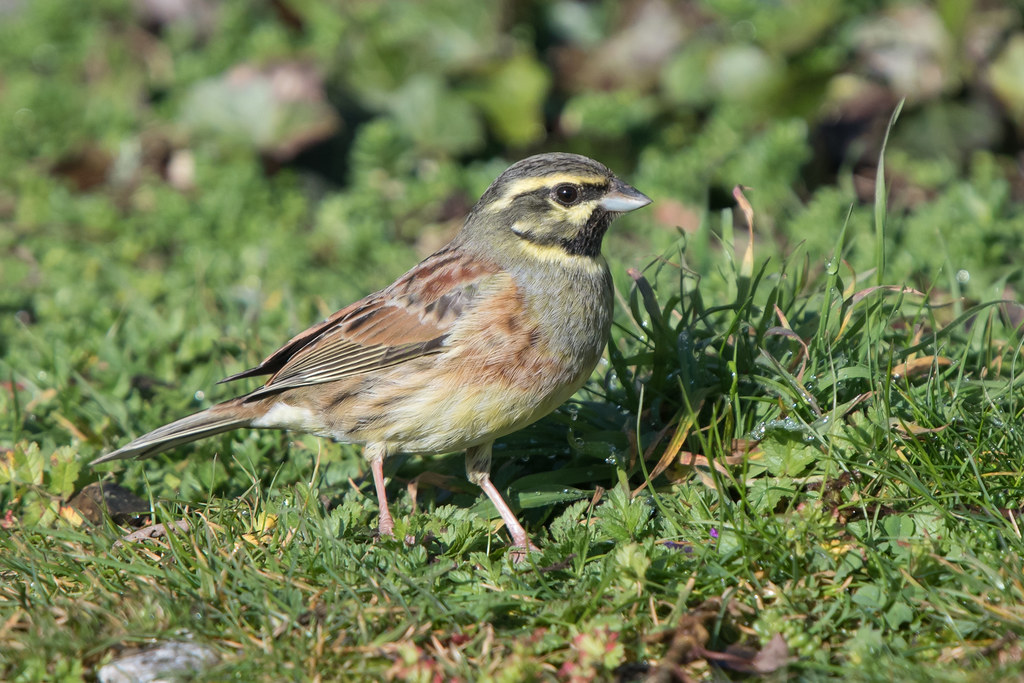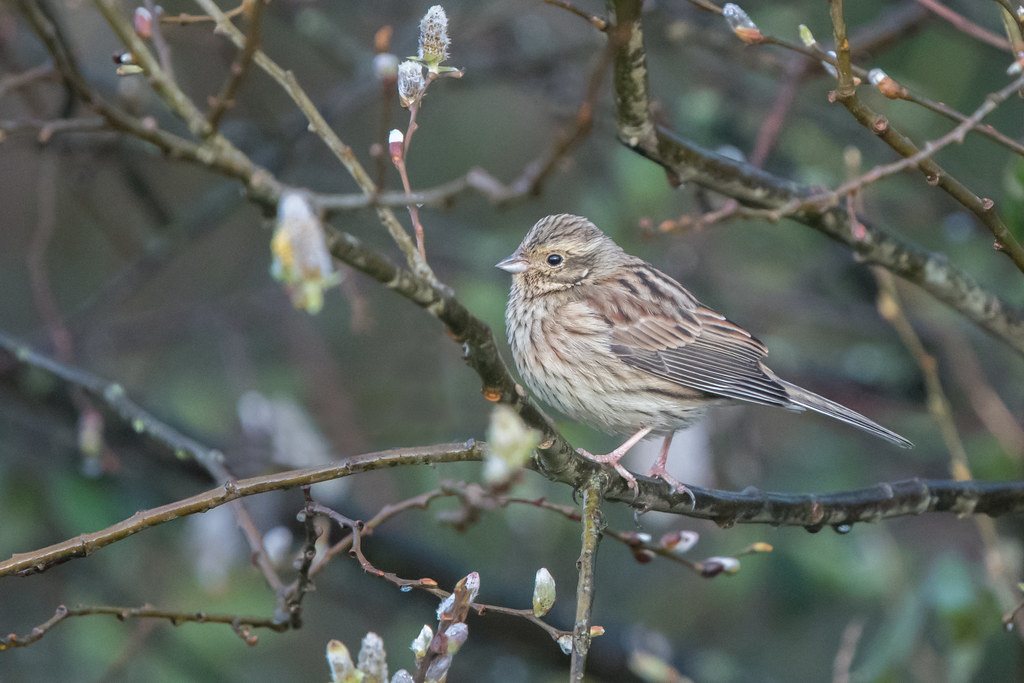

Tim writes: Cirl Buntings are one of Britain’s most localised breeding species. In the 1930s it bred on farmland in North Wales and much of the south Midlands of England. But in the second half of the twentieth century the population started to collapse. Even at the time of the first Breeding Atlas (1968-72) they occurred widely south of the Thames-Severn. But by the time of the second Breeding Atlas (2007-11) more than 80% of its occupied range was lost leaving an isolated population in South Devon. In 1990 the population was just 150 pairs but targeted conservation work has now seen that rise to more than a thousand pairs. The problem was agricultural changes. Winter cereals meant that stubbles were ploughed and planted in autumn, depriving Cirl Buntings of their main winter feeding habitat. Loss of mixed farming was also an issue as Cirl Buntings need unimproved grassland where they can find large insects like grasshoppers to feed their chicks. Ploughing and reseeding pastures with Rye Grass had also become common practice and such “improved” fields supported far fewer insects. Specialised farming meant that the necessary spring-sown arable, and old pastures were not close enough together to enable these sedentary birds to breed and survive.
Cirl Buntings are still very localised and the best place to see them is South Devon, so in early March I decided to take a trip to see if I could photograph them. You can see that they are quite similar to Yellowhammers but males have a green breast and stripy head with a black throat. This was taken at Broadsands Bay near Brixham where I bumped into an old friend Mike Langman who has been putting seed (provided by RSPB) out for them here for the past 22 winters.
[registration_form]
When I moved to the midlands in the early seventies I believe there were still a very few left in Worcestershire but they were soon gone. I saw my first in south Devon at Easter 1982 and have seen the occasional bird abroad since. I have always had a soft spot for buntings in general and Cirl is certainly an attractive bird. Lovely photos Tim, as always.
RSPB Labrador Bay reserve, which I think Mark was involved in buying, is fantastic – last time I was there I was watching a flock of 30 within 10 minutes of arriving and the year before Itook a photo almost as good as Tim’s- and that doesn’t happen very often !
Last Wednesday at 2pm I saw a bird in my hedgerow I did not recognise I live in Suffolk. I did take a photo through my window with my phone, consequently not ideal !! Looking through my numerous bird books the only likeness was a Cirl Bunting, which didn’t seem right unless a very strong wind had blown it up here ! It was very distinctive and had a bright yellow neck ring . If I gather bits from several birds and apply, it produces what I saw, unfortunately this does not make a bone fide bird . I would love it if you could help, I can email the photo.
Sincerely Barbara Turner.
Barbara – thank you for your first comment here. You can email me the photo if you like [email protected]